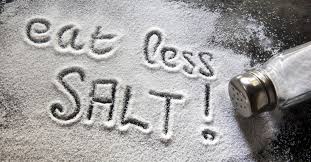From February 29 to March 6 World Action on Salt and Health celebrates Salt Awareness Week.
This year, the objective is to warn people of salt hidden in different foods, such as cereals, canned food, processed food and other. About 75% of the salt we eat is already in the food we buy; only a small amount is added to our food at home.
 Why is salt bad for our health?
Why is salt bad for our health?
Salt puts up our blood pressure, raised blood pressure (hypertension) is the major factor in strokes, heart failure and heart attacks, a major cause of death and disability worldwide. There is also increasing evidence of a link between our current high salt intake and stomach cancer, osteoporosis, obesity, kidney stones and kidney disease.
How much salt should we eat?
Adults should eat no more than 5g of salt a day, and children even less according to the World Health Organisation.
How do we eat less salt? Here are some healthy tips by the Harvard Medical School to help you decrease your salt intake:
- Choose unprocessed or minimally processed foods. Canned, processed, and frozen foods are often loaded with added salt.
- Read labels and choose lower-sodium products. When you do buy processed foods, choose items where the sodium content is less than or equal to the calories per serving.
- Know where hidden sodium lurks. Some of the highest-sodium foods that are common in the American diet include: pepperoni pizza, white bread, processed cheese, hot dogs, spaghetti with sauce, ham, ketchup, cooked rice, and flour tortillas. Make these items a small part of your diet.
- When eating out, keep an eye on salt content. Some chain and fast-food restaurant items can top 5,000 to 6,000 milligrams of sodium per serving — about four times the healthy daily limit. Downsize your portions by skipping the super-size or sharing a dish, or try to find the lower-sodium choices (many franchises have nutritional information on their websites). When eating out, ask that your dish be prepared with less salt.
- Use your sodium “budget” wisely. Rather than spending your sodium allowance on salty snacks and heavily processed foods, use small amounts of salt to enhance the flavor of produce, whole grains, nuts and legumes, and other healthy ingredients.
- Train your taste buds. One study found that people enjoy lower-sodium foods almost as much as food with the common sodium overload. It is possible to shift your sense of taste to enjoy foods made with less sodium. Make these changes gradually and consistently, and over time you’ll find that you don’t miss the salt.
You should talk to your doctor about your salt intake and how it may impact your health. Also, many insurance companies offer wellness programs to help their members watch their salt intake or deal with a health problem or just stay healthy. If you’d like help finding an insurance provider, please contact us. We’d be glad to help!
